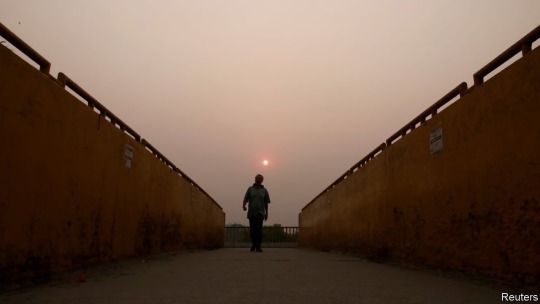#India Nepal Border Dispute
Text
In the waters of the South China Sea, Chinese coast guard vessels have clashed with Philippine ships. In the air above the Taiwan Strait, Chinese warplanes have challenged Taiwanese jet fighters. And in the valleys of the Himalayas, Chinese troops have fought Indian soldiers.
Across several frontiers, China has been using its armed forces to dispute territory not internationally recognized as part of China but nevertheless claimed by the Chinese Communist Party (CCP).
In August 2023, Beijing laid out its current territorial claims for the world to see. The new edition of the standard map of China includes lands that are today a part of India and Russia, along with island territories such as Taiwan and comprehensive stretches of the East and South China Seas that are also claimed by Brunei, Indonesia, Japan, Malaysia, the Philippines, and Vietnam.
China often invokes historical narratives to justify these claims. Beijing, for example, has said that the Japanese-administered Senkaku Islands, which it claims under the name of the Diaoyu Islands, “have been an inherent territory of China since ancient times.” Chinese officials have used the same words to back China’s right to parts of the northeastern Indian state of Arunachal Pradesh. The Chinese government also claims that its sovereignty over the South China Sea is based on its own historic maritime maps.
However, in certain periods since ancient times China has also held sway over other states in the region—Mongolia, North Korea, South Korea, and Vietnam. Yet Beijing is currently not laying claim to any of these.
Instead, Beijing has embraced a selective irredentism, wielding specific chapters of China’s historical record when they suit existing aims and leaving former Chinese territories be when they don’t. Over time, as Beijing’s interests and power relations have shifted, some of these claims have faded from importance, while new ones have taken their place. Yet for Taiwan, Chinese claims remain unchanged, as the fate of the island state is tied to the very legitimacy of the CCP as well as the vitality of Chinese President Xi Jinping’s political vision.
Many of the CCP’s territorial claims have roots in the 19th and 20th centuries during the late rule of the Qing Dynasty. Following diplomatic pressure and repeated military defeats, the Qing Dynasty was forced to cede territory to several Western colonial powers, as well as the Russian and Japanese empires. These concessions are part of what are known in China as the “unequal treaties,” while the 100 years in which the treaties were signed and enforced are known as the “century of humiliation.” These territorial losses eventually passed from the dynasty to the Republic of China and then, following the Chinese Civil War, to the CCP. As a result, upon the CCP’s establishment of the People’s Republic of China in 1949, the new Chinese state inherited outstanding territorial disputes with most of its neighbors.
But despite the humiliation the Qing Dynasty’s losses had caused, the CCP proved willing to compromise and reduce its territorial aims during times of high internal unrest. Following the Tibetan uprising in 1959, for instance, the CCP negotiated territorial settlements with countries bordering the Tibet region, including Myanmar, Nepal, and India. Similarly, when unrest rocked the Uyghur region in the 1960s and ‘90s, Beijing pursued territorial compromises with several bordering countries such as Afghanistan, Kazakhstan, Kyrgyzstan, and Tajikistan. In the aftermath of the Great Leap Forward in the early 1960s and the 1989 Tiananmen Square Massacre, the CCP also pursued territorial settlements with Mongolia, Laos, and Vietnam in the hopes of securing China’s borders during times of domestic instability. Instead of pursuing diversionary wars, the CCP relied on diplomacy to settle border and territory disputes.
But China has changed quite a lot since then. In recent years, the CCP has avoided the inflammatory domestic political chaos of previous decades, and its once-tentative hold over border regions, such as Tibet and the Uyghur region, has been replaced by an iron grip. With this upper hand, the CCP has little incentive to pursue peaceful resolutions to remaining territorial disputes.
“China’s national power has increased significantly, reducing the benefits of compromise and enabling China to drive a much harder bargain,” said M. Taylor Fravel, a political science professor at the Massachusetts Institute of Technology.
In this context, the CCP has expanded its irredentist ambitions. After the discovery of potential oil reserves around the Senkaku Islands, and the United States’ return of the islands to Japan in the 1970s, Beijing drew on its historical record to lay claim to the islands, even though it had previously referred to them as part of the Japanese Ryukyu Islands. Similarly, though Beijing and Moscow settled a dispute over Heixiazi Island, located along China’s northeastern border, in 2004, the 2023 map of China depicted the entire island (ceded, along with vast Pacific territories, by the Qing Dynasty to the Russian Empire in 1860) as part of its domain, much to the ire of the Russian Foreign Ministry.
Collin Koh Swee Lean, a senior fellow with the S. Rajaratnam School of International Studies at the Nanyang Technological University in Singapore, argues that the Chinese mapping of Heixiazi Island shows that Beijing holds on to certain core interests and simply waits for the opportune time to assert them.
“Given the current context of the war in Ukraine and Russia’s increased dependence on China, it might have appeared to Beijing that it has the chips in its pockets because, after all, Moscow needs Beijing more than the other way around,” Koh said on the German Marshall Fund’s China Global podcast.
This raises the question of whether territorial disputes that were settled during times of CCP weakness can be revisited and become subject to irredentist ambitions should power balances shift in China’s favor.
According to Steve Tsang, the director of the China Institute at the University of London’s School of Oriental and African Studies, there is currently a limit to how far the CCP will push territorial claims against Russia, since President Xi will need Russian support to sustain his grand ambitions for Chinese leadership on the global stage.
Although it would be a long shot, even Russia may not be safe from these ambitions indefinitely. Given that large swaths of Russia’s Pacific territories were part of China until 1860, “China could claim back the Russian Far East when it deems the time is right,” Tsang said. Such control would grant Beijing unrestricted access to the region’s abundance of coal, timber, tin, and gold while moving it geographically closer to its ambition of becoming an Arctic power.
While there is plenty of historical evidence pointing to former Chinese control over the southeastern portion of the Russian Far East, the historical record is less unequivocal about Chinese control over Taiwan. Anything resembling mainland Chinese control over Taiwan was not established until after 1684 by the Qing Dynasty, and even then central authority remained weak. In 1895, the Qing Dynasty ceded Taiwan to the Empire of Japan following the First Sino-Japanese War, and by the time Chinese authority was restored in 1945, Taiwan had undergone several decades of Japanization.
These details have not prevented the CCP from claiming that Taiwan has been an inalienable part of China since ancient times. Yet more than any other irredentist claim, Xi has made unification with Taiwan a major component of his vision to rejuvenate the Chinese nation.
Unification, however, has little to do with ancient history and more to do with the challenge that Taiwan presently poses to Xi’s aims, according to Chong Ja Ian, an associate professor who teaches about Chinese foreign policy at the National University of Singapore.
“The CCP pursues a Chinese nationalism that emphasizes unity and homogeneity centered around the CCP leadership while they also often claim that their single-party rule is acceptable to Chinese people,” Chong said.
In contrast, Taiwan holds free elections in which multiple political parties compete for the favor of a people that have increasingly developed an identity distinct from mainland China.
“The Taiwanese experience is a clear affront to the CCP narrative,” Chong said.
Control over Taiwan is also attractive to Beijing because it is key to unlocking the Chinese leadership’s broader ambition of maritime hegemony in waters where almost half of the world’s container fleet passed through in 2022.
As with the case of Taiwan, the CCP’s historical arguments regarding its claims on island groups and islets in the East and South China Seas are likewise much weaker than many of its land-based claims.
Instead, Chinese territorial intransigence in the maritime arena is more about a strategic shift in the value of the seas around China, Fravel said.
Today, it has been estimated that more than 21 percent of global trade passes through the South China Sea. And beneath these waters are not only subsea cables that carry sensitive internet data but also vast estimated reserves of oil and natural gas.
Although it may say otherwise, Beijing’s unwillingness to let up on its tenuous territorial maritime claims suggests that China is pursuing long-held ambitions and global aspirations rather than attempting to reverse past losses. So long as the CCP wields its historical record selectively and changeably to serve its aims—and is willing to back its claims up with military action—China’s neighbors will remain at risk.
18 notes
·
View notes
Text
Nepal was furious in 2019 when India published a map, including some of the areas claimed by Kathmandu in the western region, close to the border with China. The diplomatic wrangle escalated after Nepal also published its own map including those disputed areas. A few years before the map controversy, the ethnic Madhesi community in Nepal had blocked goods traffic from India as part of its 2015 protests for more rights. Though India denied it was behind the economic blockade, very few people in Nepal believed the denial.
Anbarasan Ethirajan, ‘Agnipath scheme: The pain of Nepal's Gurkhas over Indian army's new hiring plan’, BBC
2 notes
·
View notes
Text
Best Law Firm in Nepal

Bhandari Law and Partners is the best law firm in Nepal that provides excellent legal services having qualified and experienced corporate lawyers. The firm represents a large number of national and international clients including multinational companies, banks and financial institutions, international institutions, INGOs, and government bodies. We often work as the local counsel to international law firms.
The law firm gets involved in high-value cross-border corporate transactions and dispute resolution involving multiple jurisdictions. The law firm routinely provides corporate legal services to international clients, international institutions, foreign governments, bilateral and multilateral agencies, and individual clients.
Our main areas of focus include investment law, energy and infrastructure law, construction law, public procurement and government contracts, international trade, entertainment law, tax law, corporate law, banking and insurance, intellectual property, labor law, white-collar crime, litigation and arbitration, project finance, and telecommunication, media and technology law.
Law Firm with the Best Corporate Lawyer in Nepal
The firm was founded by Advocate Thahar Bahadur Bhandari, a leading lawyer in Nepal having an in-depth understanding of commercial law with the working experience of more than 30 years. The firm enjoys a distinguished reputation as the firm is led by Mr. Bhandari has work experience of more than three decades and is recognized as one of the top commercial law firms in Nepal. Our team consists of specialized corporate lawyers with training and education in highly regarded universities in the Europe and UK.
Bhandari Law and Partners is recognized as one of the best law firms in Nepal specializing in commercial law, arbitration, and corporate litigation with a team of the best corporate attorneys in Nepal.
Practice Areas and Services
The firm is one the best law firms in Nepal working in wide areas of sectors and diverse legal services which are as mentioned:

Corporate Service Provided by the Law Firm
The law firm provides the following corporate legal services:

Team with Highly Professional Commercial Lawyer in Nepal
Bhandari Law has a robust team of lawyers in Nepal with rich experience across various areas of work including commercial law and dispute resolution. The team including attorneys, paralegals, thought leadership managers and interns are highly trained specialists in their area of law and are dedicated to providing exceptional legal services in a creative environment. We provide relevant and highly tailored solutions to our clients’ composite legal challenges.
Advocate Thahar Bahadur Bhandari is a highly experienced lawyer in Nepal who has been practicing law for more than three decades. He is the Senior and Founding Partner of the law firm. He is well known for his expertise in civil and corporate litigation and represents cases before the High Court and Supreme Court. He has represented high-value cases before different judicial and quasi-judicial bodies in Nepal.
In addition, Advocate Nabin Bhandari is one of the leading corporate lawyers in Nepal who has extensive experience in the matter of corporate law and dispute resolution. Nabin completed his Master's in International Business Law from the University of Brussels, Belgium, and also has experience in the completion of short-term legal courses from Switzerland and UK-based universities.
Collaboration with International Corporate Clients and Corporate Law Firm
The team of Bhandari Law has provided service to different companies and individuals from most of the jurisdictions of the world. The team has represented clients from the UK, US, Japan, South Korea, China, India, Belgium, France, South Africa, Singapore, Cayman Islands, British Virgin Islands, Mauritius, Sweden, Denmark, UAE, and many other countries.
In addition, team members have experience working with collaborating top-ranked international corporate law firms including Linklaters, Backer and McKenzie, DLA Piper, Landing Law, Clifford Chance, Zhong Lun Law Firm, King & Wood Mallesons, Wong Partnership LLP, and Duane Morris & Selvam LLP.
0 notes
Text
Places to visit in India | Best Places to Visit In India in 2023.
Places to Visit in India. India is an enormous and diverse destination. Bordered by Pakistan, China, Nepal, Bhutan, Sri Lanka, Bangladesh and Myanmar, not to mention the Arabian Sea and the Bay of Bengal, means that there are many different sides to the country.
1. Mysore
In the southern tip of India places to visit in india , famous places in india you’ll find the city of Mysore. Once the capital of the Wodeyar dynasty, Mysore is best tourist places in india known for housing the magnificent Mysore Palace. The palace is the epitome of opulence, and a tour through the structure will reveal upscale touches like carved rosewood doors, ceilings decorated in ivory and countless paintings on the walls.
best places to visit in india If you’re in Mysore, you won’t want to miss the incredible Devaraja Market, an outdoor experience on Dhanwanthri Road where you can buy some chai tea and then browse stalls offering produce or sandalwood carvings.
2. Amritsar
In the northern province of Punjab is Amritsar, famous places in india a holy city and a mecca for the Sikh religion. The main attraction in Amritsar is the Golden Temple, also known as the Harmandir Sahib. Built more than 400 years ago, this temple truly is golden, and it is always packed with Sikhs visiting from around India tourist places in india and the rest of the world.
3. Ladakh
In northernmost places to visit in india, in the heavily disputed Kashmir region, is the mountainous destination of Ladakh. This region is large, but it has a low population density and a number of nomadic residents. Breathtaking, pristine scenery is a major draw to the area, but virtually all travelers will also spend time in the town of Leh.
The town is located at a very high elevation, and it is also home to the 17th century Palace of the King of Ladakh. Buddhist culture is also prominent in Leh, and you may wish to explore some of the best tourist places in india many Buddhist monasteries and temples in the Old Town. tourist places in india.
4. Goa Beaches
On the western coast of best tourist places in india is Goa, a former colony of Portugal that blends tourist places in Indian culture with colonial influences and plenty of international tourism. Goa is popular largely because of its spectacular beaches.
The busiest and most popular places to visit in india of all is Candolim Beach, where travelers from around the world flock to soak up the sun. Anjuna Beach, by contrast, is far less crowded. It is also an amazing place where you can walk to Chapora Fort and admire the sandy coastline from a new perspective.
Palolem is considered one of the most beautiful beaches in all of Goa with it’s natural bay surrounded by lofty headlands on either sides. Goa is best places to visit in india widely loved by adventurers, and recreational activities are plentiful for those eager for some fun in the sun.
5. Delhi
About Delhi Tourism: Boasting cultural diversity and rich heritage, Delhi is places to visit in india to several temples, tombs, gardens, forts, museums, markets and more tourist places in india. Holidify’s wide range of Delhi travel packages are suitable for all kinds of travellers and take you to some of the best places to visit in indiaspots in the city. So whether you are looking for a Delhi package for a historic getaway or just a Delhi holiday package with family and friends, pick the best places to visit in india one at Holidify.
There are plenty of locations around the city that are a testament to its Mughal and then colonial past, such as the majestic Humayun’s Tomb, the first garden-tomb in the subcontinent, the resting place of Emperor Humayun. Also, the 238-feet tall Qutub Minar in the Mehrauli area was sanctioned by Qutb Ud-Din-Aibak in 1192 and is associated with the Delhi Sultanate.
Made of red sandstone, the magnificent Red Fort in Old Delhi was built by Shah Jahan and should be on your list of places to visit here; every year, on Republic Day and Independence Day, crowds flock to the fort to witness the flag hoisting ceremony. Some other historical sites included in Delhi tour packages are Agrasen ki Baoli, India Gate, Jantar Mantar and Jama Masjid.
f you’re spending any time in Northern India, you will almost certainly visit the capital city of Delhi. The enormous sprawling destination is home to several districts, and it is considered to be one of the oldest cities in the world. One of the top sights in Delhi is the Red Fort, or Lal Qila, which was built in the 17th century.
The Red Fort is made from sandstone, and you will be able to walk through its Lahore Gate, into the bazaar, through the jewel palace and even into the former residence of the sultan. best places to visit in india While in Delhi, you should also make time for the many museums and religious structures that make up the city.
0 notes
Text
How To Save Two Million Lives a Year! India and Pakistan Need To Join Forces To Fight Smog

A man walks along a pedestrian bridge as the sun rises behind him during a smoggy morning amidst the ongoing air pollution in Kathmandu, Nepal April 7, 2021. REUTERS/Navesh Chitrakar
— Leaders | Air Pollution in South Asia | February 17th 2023 | The Economist
Environmental problems in big, fast-growing developing countries can seem intractable. China’s recent advances against air pollution therefore offer, as well as relief to millions, an inspiring lesson.
Before hosting the Olympics in 2008, Beijing was so blanketed in poisonous smog it had to close factories and empty its roads to protect athletes’ health. Yet by applying more modest controls over a much greater area, spanning Beijing, Tianjin and 26 adjacent prefectures, it has since made much more sustainable progress. The average concentration of hazardous pm2.5 particles in Beijing in 2021 was half what it was in 2015. Contestants at the Winter Olympics in Beijing last year performed under blue skies and with a view of distant peaks.
This should provide not only inspiration but an invaluable model for the current possessors of the world’s filthiest air, the countries of South Asia. The region has nine of the world’s ten most polluted cities, with devastating consequences for their citizens. In Bangladesh, India, Nepal and Pakistan air pollution kills over 2m people a year. Output lost to pollution-related illness or deaths is estimated to have cost India alone $37bn, or 1.4% of gdp, in 2019. And despite growing public anger over this catastrophe, none of the countries has introduced effective pollution controls.
New analysis by the World Bank suggests that is mainly because they are trying to do so, as Beijing formerly did, on too small a scale. Most of the toxic brown haze choking South Asia’s cities comes not from local cars and waste dumps but from brick kilns, stubble-burning and other pollution sources far away.
The best way to reduce it, as China has shown, is to model pollution, share data and plan controls over the vast expanse in which the smog circulates. That way the most cost-effective solutions, such as regulating brick-kilns, can be prioritised over more expensive or growth-dampening ones, like closing power stations. The Bank has mapped six of these so-called airsheds in South Asia. Huge areas, they span states and municipalities; four of the six cross national borders. One stretches from eastern Iran via western Afghanistan into Pakistan; another from northern India to Bangladesh.
It is not easy to imagine India and Pakistan, let alone the mullah-rulers of Afghanistan and Iran, exchanging data and best-practice on airborne particulates. Riven by its violent history, South Asia is one of the world’s least integrated and most divided regions. Its officials refer to the smog clouds puthering to and fro across their disputed borders as “environmental terrorism”. This must change. South Asian governments will not otherwise be able to tackle the enormous economic and environmental problems they increasingly face.
To meet the aspirations of their 2bn people, all the countries need sustained and rapid economic growth, which their estrangement impedes. Trade within the region is minuscule and one of its biggest missed opportunities. And air pollution is only one of the cross-border environmental blights it faces. Global warming is redesigning the waterways that cross South Asian frontiers, making severe droughts and flooding likelier on either side. It will increasingly also send refugees across them. To grow faster and prepare for such crises, South Asian countries must learn to co-operate. In their common need to abate the smog killing their citizens, they have both a compelling incentive and a political opportunity to begin that process. ■
0 notes
Text
0 notes
Text
The party that made Kalapani an issue defeated in Darchula
The party that made Kalapani an issue defeated in Darchula
Pithoragarh: The Communist Party of Nepal ( Unified Marxist – Leninist ), whose leaders had aggressively used the Kalapani dispute with India in their poll discourse, lost the parliamentary seat and the two provincial seats in Darchula on the India – Nepal border. The issue was seen as the party’s major poll plank in the area and was expected to fetch it more votes.
Elections were held in Nepal…

View On WordPress
0 notes
Text
Will retake land that has been occupied: Oli - Times of India
Will retake land that has been occupied: Oli – Times of India
PITHORAGARH: Nepal’s PM Sher Bahadur Deuba at a poll rally in Dadeldhura, bordering Uttarakhand’s Champawat district, on Saturday, said that “the border dispute with India will be solved through dialogue and diplomacy”. This comes after TOI had reported that ex-PM, KP Sharma Oli, had raised Kalapani issue at a poll rally in Darchula, saying “Nepal will not give up a single inch of her territory…

View On WordPress
0 notes
Text
Employing a Hiking Overview

Hiring a travelling guide is a must when you are heading out on a trip. Not only will they arrange your transport, accommodation, and also food while on the trip, but they will certainly also supply you with details on regional culture and also occasions. Treking overviews can even become pals for life. To ensure that your expedition goes efficiently, you can read more here to know what to look for when hiring a hiking overview. Before picking a trekking guide, do some research study on the company and the trek itself. In Kathmandu and also Pokhara, you can discover numerous trekking firms, as well as you can inspect their testimonials on the TripAdvisor website.
A detailed map is important when intending a trek, and also a comprehensive guidebook can be valuable in instance you're not able to check out Nepali. When you have an approximation of the sort of plan you desire, interview your chosen guide. Hiring a trekking guide is necessary if you are taking a trip with children. There will be moments of dispute, complaints, and even fights, but you'll review the experience with joy and also admiration. It's important to select a guide who is experienced with family members and also is well-suited to lead you with the experience. By doing this, your children can learn new abilities and make pals, as well.
If you're planning a family members walk, see to it that the guide is experienced in hiking with kids and also is familiar with the city. Treking overviews are crucial for the safety and security of your team. Their work summary entails leading groups of walkers with tracks and sharing regional knowledge. Lots of guides are outdoor lovers. Many training is provided by experience tourism firms and also take a trip guide institutions, yet some are self-taught. Treking overviews have to have great interpersonal abilities and take pleasure in working with individuals. There's no substitute for experience, and also it's an excellent way to broaden your knowledge and also acquire a better understanding of the culture and setting. Continue reading on this helpful article to get more enlightened about employing a hiking overview.
Treking guides need to likewise have experience with usual hill diseases. They should recognize what sort of food and drinks are risk-free to consume throughout stomach upsets or migraines. They need to likewise have access to emergency situation clinical products such as ace bandages as well as sore packages. A trekking guide will recognize exactly what to do in situation of emergency. It's also a great idea to bring a water purifier when possible. You do not wish to be stranded in a location where you can not locate any water. If you're intending on treking in Nepal, it's suggested to employ a travelling guide. Travelling overviews are educated to help you navigate the hills as well as guarantee a secure expedition for you as well as your group. Working with a travelling guide aids maintain an important task in Nepal and keeps the regional neighborhood closer to the visitor's base.
One of the most fulfilling aspect of hiring a trekking overview is the experience you'll get. As well as if you wish to get the most out of your expedition, make certain to pick an overview that is skilled in local society and location. The very best time to see this hill is throughout the Kanchenjunga Sanctuary, in northeastern Nepal. This area is popular for Mt. Kanchenjunga, the world's third-highest optimal. It sits on the border with India. Due to its remote place, the area draws in several travelers trying to find less-crowded tracks. So, make sure you pick a hiking guide with experience in hiking the Mountain ranges! You can get more enlightened on this topic by reading here: https://en.wikipedia.org/wiki/Backpacking_(hiking).
0 notes
Link
1 note
·
View note
Text
Border dispute: Stop unilateral construction of roads, Nepal told India
Border dispute: Stop unilateral construction of roads, Nepal told India
Nepal on Sunday asked India to stop the “unilateral construction and expansion” of roads in its area east of the Kali River, but refrained from registering a formal diplomatic protest.
This comes days after Prime Minister Narendra Modi announced the extension of the road in the Lipulekh region, which Nepal claims as its own. While addressing an election rally organized by BJP in Haldwani,…
View On WordPress
#current#harpianews#India#india latest news#India Nepal border dispute#India Nepal border issue#India Nepal border road#India Nepal relations#India news#Indian Embassy in Nepal#Indian Express News#latest#Nepal news#news#Sher Bahadur Deb
0 notes
Text
विवाद के साथ नेपाल में राष्ट्रीय जनगणना
विवाद के साथ नेपाल में राष्ट्रीय जनगणना
पिथौरागढ़. पड़ोसी मुल्क नेपाल (Nepal) में इन दिनों जनगणना चल रही है. नेपाल के सामने दिक्कत ये है कि उसके दो गांवों में तब तक जनगणना नहीं हो सकती जब भारत नेपाली जनगणना टीम को अनुमति नहीं देता है. ये दिक्कत नेपाल के उस इलाके में हो रही है जहां के 3 भारतीय गांवों को वो अपने नक्शे में शामिल कर चुका है.
नेपाल में 11 नवम्बर से 12वीं राष्ट्रीय जनगणना का काम शुरू हो चुका है, जिसे हर हाल में 25 नवम्बर…
View On WordPress
#Dehradun News#Government of Uttarakhand#Gunji village#India Nepal border dispute#Indo Nepal border villages#Indo Nepal China border#Kuti village dispute#Nabi village#Narendra Modi#Nepal national census#Pithoragarh News#Pithoragarh News Today#Uttarakhand latest news#Uttarakhand news#भारत की सीमा से जुड़े गुंजी नाबी कुटी गांव में नेपाल की राष्ट्रीय जनगणना अनुमति विवाद
0 notes
Text
High Alert On Indo-nepal Border, Attempts To Illegally Come To India Will Be Considered As Intrusion - भारत-नेपाल सीमा पर हाई अलर्ट, अवैध रूप से भारत आने की कोशिश को माना जाएगा घुसपैठ
High Alert On Indo-nepal Border, Attempts To Illegally Come To India Will Be Considered As Intrusion – भारत-नेपाल सीमा पर हाई अलर्ट, अवैध रूप से भारत आने की कोशिश को माना जाएगा घुसपैठ
[ad_1]
नेपाल सीमा पर तैनात जवान
– फोटो : अमर उजाला

पढ़ें अमर उजाला ई-पेपर
कहीं भी, कभी भी।
*Yearly subscription for just ₹299 Limited Period Offer. HURRY UP!
ख़बर सुनें
ख़बर सुनें
नेपाल में जिस तरह की भारत विरोधी गतिविधियां चल रही हैं, उनको देखते हुए भारत-नेपाल सीमा पर हाई…
View On WordPress
#Dehradun Hindi Samachar#Dehradun News in Hindi#India#India nepal border dispute#India-nepal border#Latest Dehradun News in Hindi#Nepal#nepal armed forces battalion#nepal bop
0 notes
Text
Nepal deployed entire battalion of army in Lipulekh
Nepal deployed entire battalion of army in Lipulekh
काठमांडु। लद्दाख में सीमा विवाद को लेकर भारत-चीन के बीच तल्खियां काफी बढ़ गई है और दोनों देशों में तकरार बढ़ता ही जा रहा है। अब चीन ने भारत को घेरने के लिए पड़ोसी देश नेपाल को भी भारत के खिलाफ खड़ा कर दिया है। इस साजिश में चीन कुछ हद तक कामयाब भी हो गया है।
दरअसल, बीते कई महीनों से भारत-नेपाल के बीच लिपुलेख, कालापानी और लिम्पियाधुरा को लेकर तनाव बना हुआ है। पहले नेपाल ने भारत के तीन इलाकों को…
View On WordPress
#india nepal border dispute#india nepal border issue#india nepal border tension#india nepal relation
0 notes
Text
In six years, India’s ties with other South Asian countries have frayed, providing China with an opening
In six years, India’s ties with other South Asian countries have frayed, providing China with an opening
[ad_1]
Written by Adhir Ranjan Chowdhury
|
Updated: August 12, 2020 8:58:08 am


From Indira Gandhi to Atal Bihari Vajpayee to Manmohan Singh, all prime ministers have stressed that the more stable and cordial our relationship with our neighbours, the more sustained will be our progress. (Illustration by C R Sasikumar)
So, did Chinat…
View On WordPress
#india china#india china border dispute#India Nepal border dispute#india south asia relations#India-China relations#Modi govt
0 notes
Text
भारत-नेपाल के बिगड़ते रिश्ते, फिर से एक युवक की बेरहम पिटाई, गंभीर स्तिथि में रेफर

भारत के रिश्ते चीन और पाकिस्तान से ठीक नहीं रही हैं. लेकिन अब भारत और नेपाल के रिश्तों में भी खटास आ गई हैं. इसका असर सीमा पर भी दिख रहा हैं. भारत और नेपाल के बीच 1880 किलोमीटर लम्बी खुली बॉर्डर हैं. दोनों देशो के नागरिक बिना वीजा के एक दूसरे के यहाँ सफर करते रहे हैं. लेकिन अब हालात बदल रहे हैं.
Read the full article
0 notes